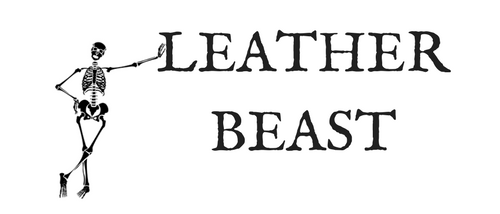What to Know About Chrome Tanned vs. Vegetable Tanned Leather
Leather at the most basic level, as you probably already know, is the result of taking animal rawhide or skins and then tanning them to create a flexible and durable material that can be used for clothing, accessories, shoes and a lot more.
So how does this leather tanning process work?
Well it’s a complex process to say the least and many of the longest running tannerys hold their tanning recipes very close to the chest. Many of these secret recipes have been passed down from generation to generation and unchanged for hundreds of years.
The two main types of leather tanning that exist today are chrome tanned and vegetable tanned. There are some tanneries that use a combination of the 2 processes as well and of course there is brain tanning and other smaller operational types of tanning, but to keep things simple and to give a basic overview, i'm only going to cover the main characteristics of chrome and vegetable tanned leather.
Chrome Tanned leather
You've probably heard of this type and you've probably even used it before. Chrome tanned leather is a tanning process that was invented in the mid 1800s in an effort to systematize leather production and so that quantities could be mass produced to keep up with the demand.
The process of chrome tanning involves using chromium salts and due to the blue nature of chromium, the wet leather at one stage of the process is called "wet blue".
This process of tanning is a quicker process then other tanning methods such as vegetable tanning, but in some countries where the proper environmental and recycling precautions are not taken, like anything else, it is bad for the environment.
An amazing 80-90% of the world’s leather supply is chrome tanned with India being one of the largest producers of chrome tanned leather.
Chrome tanned leather is generally about half the price of vegetable tanned leather and it can be top or full grain leather.
It can be challenging to get a smooth burnished edge on chromed tanned leather because of the lack of collagen proteins that remain in the leather after being chrome tanned. The leather is more porous after chrome tanning which gives it it's typically softer hand.
Chrome tanned leather is usually a softer and lighter weight leather anywhere from 1-5oz and it’s main use is in upholstery and garment leather. The leather is softer and more supple then vegetable tanned leather.
Vegetable Tanned Leather
Vegetable tanned leather is usually full grain leather and the tanning process employs the tannins from various natural materials such as tree bark, fruits, leaves, roots, etc in the tanning process.
The process of vegetable tanning leather takes longer than chrome tanned leather and as a result it is more expensive of a product in the end.
Once wet, vegetable tanned leather has a tendency to shrink and harden which makes it unsuitable for some applications, however there are obviously many benefits to using vegetable tanned leather for certain projects..
Vegetable tanned leather is the only leather that can be used for tooling. Because the collagen protein is preserved during the tanning process, the leather is stiffer and a more structured leather to work with. This also means that you can easily bevel and burnish the edges and get that nice smooth and finished look.
A lot of vegetable tanned leather comes in a pinkish nude or light brown color, which makes it easy to be dyed using either a mat finish or a gloss finish with an atom wax or something similar.
Other types of vegetable tanned leather that come in darker colors are English bridle, Bridle, Holster and Harness leather, to name a few.
As you can see there are pros and cons to both types of leather. Each type comes with very distinct properties which makes it easier to determine which type of leather might work best depending upon the specific project.
Which leather type are you going to use?


